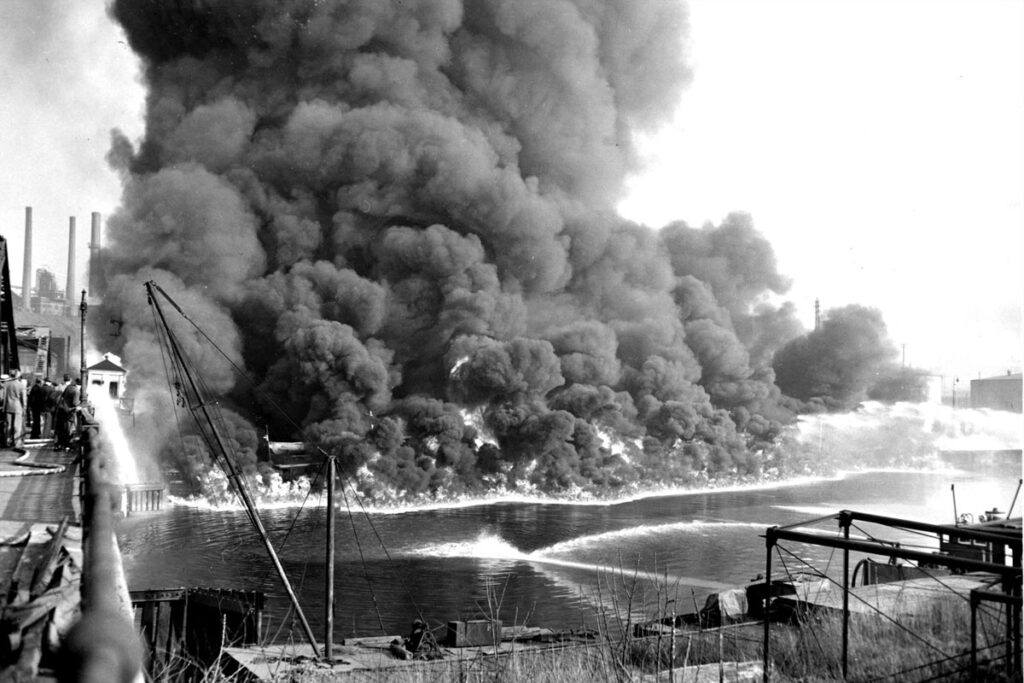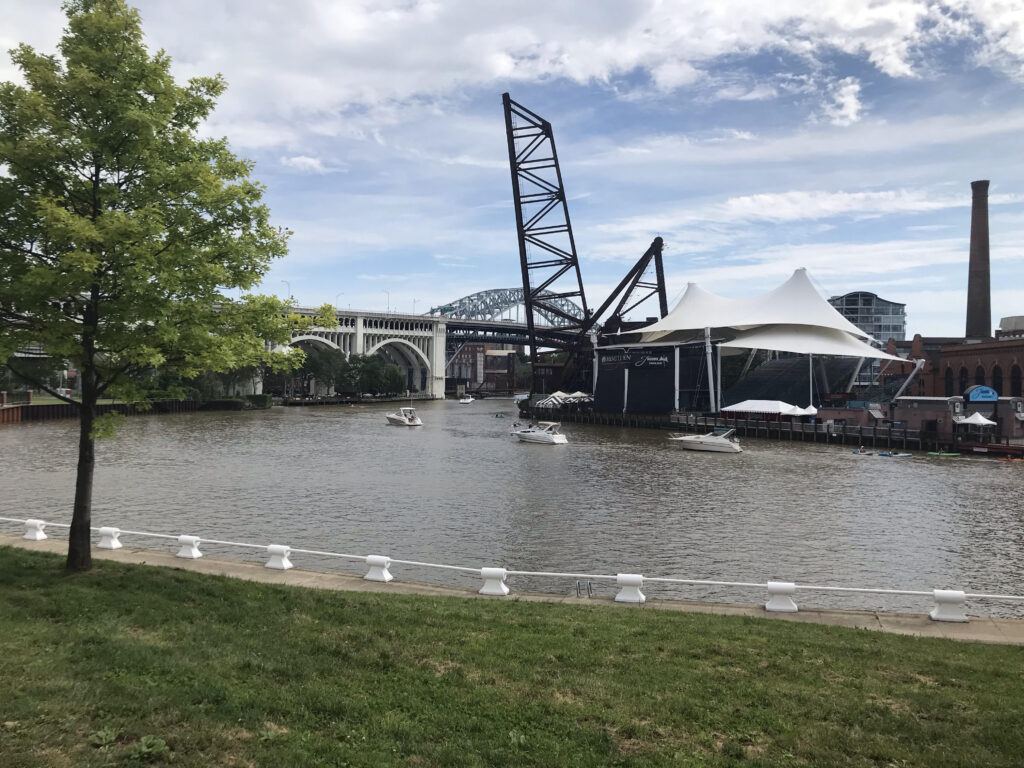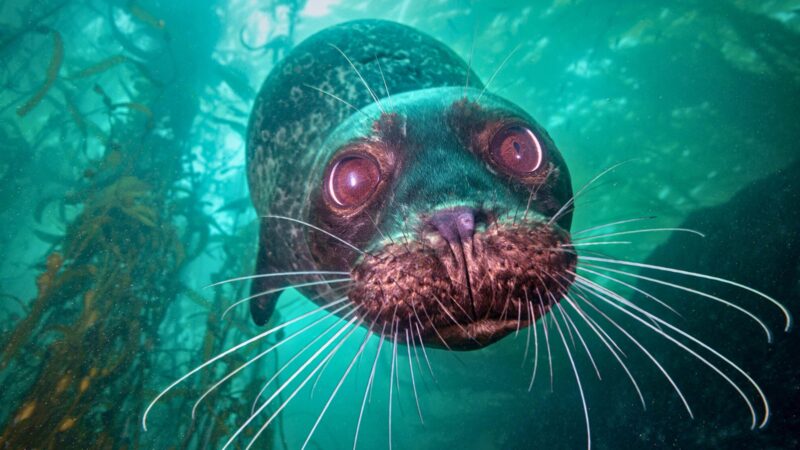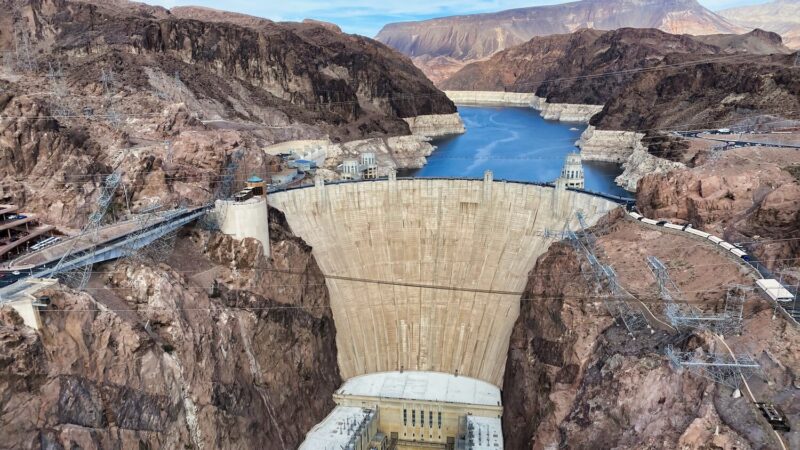
A burning reminder of what happens if we roll back the Clean Water Act
It wasn’t first time. The Cuyahoga burned 13 times in the previous 100 years, thanks mostly to rapid industrialization and lack of sewage treatment. This year, Cleveland hosted annual River…
On June 22, 1969, Cleveland’s Cuyahoga River caught fire. The water itself was not burning, of course — it was the tons of crude oil, sewage and other contaminants in the river that were on fire.
It wasn’t first time. The Cuyahoga burned 13 times in the previous 100 years, thanks mostly to rapid industrialization and lack of sewage treatment.
This year, Cleveland hosted annual River Rally conference to coincide with the 50th anniversary of the 1969 fire. Along with high-profile oil spills and the popularity of Rachel Carson’s best-selling Silent Spring — which singled out the chemical industry and called for better human stewardship of the planet — the fire created a groundswell of public sentiment that compelled legislators to do something. Until then, polluted rivers and airways were considered the price of progress. The stark image of a river on fire alerted the public that something was very wrong with our environment.
The Cuyahoga is now one of only 14 rivers to be declared an American Heritage River. It is home to 76 species of fish, thanks largely to improved sewage treatment and stringent water quality requirements for factory outflows.
These policy and infrastructure improvements renewed once-polluted rivers to once again be places of recreation and sources of clean drinking water, protected by the 1972 Clean Water Act. The act federally protects all waters of the United States from polluters and places deadlines on the cleanup of dirty rivers. A company can no longer dump oil or other pollutants into the ocean or waterways. These “point-source polluters” are monitored and controlled thanks entirely to the Clean Water Act. Additionally, the Clean Water Act also requires permits for developers to fill in a wetland and to possibly mitigate their impact by protecting another water resource. It is directly responsible for a 12% improvement in fishable U.S. rivers.
That legislation is now under attack, putting rivers, streams and wetlands across the country at risk. Of particular concern is a proposed redefinition of what areas are protected. The Trump Administration’s proposed Waters of the United States rule would disqualify over 50% of our nation’s wetlands and millions of miles of surface waterways from the protection. Particularly relevant for those of us living in the Southwest U.S., the new rule would disqualify seasonal streams and rain-dependent streams, which make up 9 million stream miles the U.S.
If the Clean Water Act is rolled back the way the Trump Administration wants, developers and polluting industries will be free to pollute and alter our nation’s wetlands and ephemeral streams unless individual states has its own laws protecting these waterbodies. It might be less of a problem in environmentally-conscious states like California, but in states with governments that advocate deregulation, it would be devastating. These wetlands and streams provide important habitat for many birds, fish and other wildlife. They are hydrologically connected to other water bodies, many of which are sources of drinking water. Waterways would be reduced to places for developers to pave and polluting industries to dump.
While the proposal is disheartening, Frank Jackson, the current Mayor of Cleveland, called for resilience at the River Rally. In 1969, “the debate was as to whether or not we would be willing to pay the price for clean water. We made the right choice; now we are facing similar problems.” We are all downstream of someone, he said, whether or not their waterways are polluted or protected, and the battle for clean water in the U.S. is not over.
Politically, it is difficult to imagine the entire country coming together on major legislation to effectively regulate powerful industries, but that’s exactly what happened in the late 1960s and early 1970s. In 1969, Mayor Carl Stokes of Cleveland, the first African-American mayor of a major U.S. city, went to D.C. with Congressman Louis Stokes, his brother, to advocate for tougher federal regulations. Even though he had already convinced voters to pass a $100 million local water improvement bond, he recognized federal action was needed for rapid, meaningful improvement. By the end of 1970, President Richard Nixon signed an executive order, creating the U.S. Environmental Protection Agency. The Clean Water Act was vetoed by Nixon as “too expensive,” but that veto was overridden by Congress in bipartisan fashion. At the time, only a third of the nation’s waters were safe for fishing and swimming.
Although the proposed redefinition public comment period is finished – where over 530,000 individuals told the EPA they oppose the plan – and the Administration’s one and only public forum has passed, concerned members of the public can contact their members of congress or post on social media to boost awareness of this potential setback to protecting our nation’s waterways. By increasing awareness and putting pressure on elected officials, they can increase pressure on the Trump Administration. This kind of pressure has worked on the past, when the Bush Administration was considering weakening environmental protections the public outcry and oppositions from states stopped it from being passed. On a local level, supporting local environmental nonprofits who work to protect our waterways using science and litigation can help. Environmental nonprofits like the Natural Resources Defense Council are working hard to defend the Clean Water Act and protect our nation’s waterways. If this rule does go through, it will be litigated against in courts by groups like them.

Top Image: Photos of the Cuyahoga River on fire helped spark the modern environmental movement. | Photo via Cleveland State University Library.
Published:


